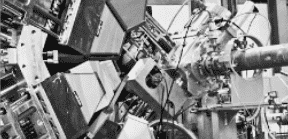Multichannel Analyzers (commonly referred to by the acronym MCA) are instruments whose function is to automatically analyze large numbers of input voltage pulses input and to sort them depending upon their respective voltages. The analysis involves measurement of the pulses and counting them into ‘bins’ or ‘channels’ which is the their naming. As its name implies the MCA contains many channels, typically many hundred and often several thousand. Each channel holds the count of the number of pulses which have a given voltage range. Thus the MCA generates a histogram of the number of pulses which fall in various voltage ranges.
Multichannel Analyzers are widely employed across various sectors. They have been widely used in nuclear physics applications. The most common application is that coupled with high performance radiation detectors which produce output pulses proportional in amplitude to the radiation energy.


